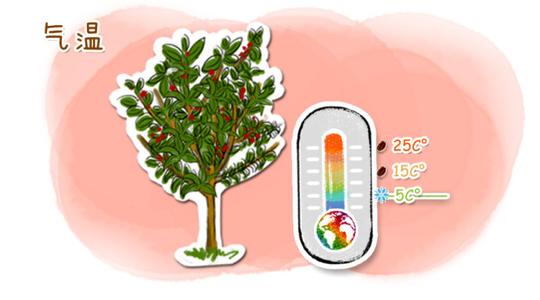Regional characteristics of Ugandan Coffee Flavor description Grinding scale treatment
Uganda Coffee Flavor Description Grind Scale Processing Taste Variety Regional Characteristics
Wet aroma (1-5): 3.4
Acidity (brightness)(1-10): 8
Taste (layering)(1-10): 8.5
Taste (body)(1-5): 4
Aftertaste (Residue)(1-10): 8.1
Balance (1-5): 0
Base Points (50):50
Later, when ships replaced sailboats, people drank fresher coffee beans because of shorter delivery times. But people accustomed to old beans are not used to this fresh taste, so they desperately pursue old Java coffee, so that the Indonesian government and some businessmen deliberately store fresh beans in warehouses for one to two years before selling them to consumers. In fact, the acidity of aged Java beans is reduced to nearly zero compared to fresh beans, while the aroma is more intense. Because of the long storage time, the cost increases a lot, and the quantity is limited, so aged Java has always been a hot commodity in the coffee market. In the 1880s, some traders deliberately tampered with fresh Guatemala or Venezuela beans to imitate old Java and sell them at high prices. What is intolerable is that 0 traders dye coffee beans in a way that makes them look more like aged java, but there is no doubt that the dyeing chemicals are poisonous.
Total score (max. 100):85.2
Strength/Main Attributes: Medium Strength/High Oil Content, Rustic Mild
The territory is located between the east and west branches of the Great Rift Valley in East Africa. It slopes gently from west to middle and is low and flat in the south. Margarita Peak is 5 109 meters above sea level, which is the highest peak in China. There are many rivers and lakes, and the water area is large, so Uganda has the name of "plateau water town" and "pearl of East Africa". Lake Victoria is the second largest freshwater lake in the world and the largest in Africa, covering 43 per cent of Uganda's territory. The White Nile, which flows from Lake Victoria, flows through most parts of the country. Its unique scenery includes tropical forests and tea trees on the snow-capped slopes of the Ruwenzori Mountains, arid plants of Karamoja, rolling savannas of Acholi, Bunyoro, Tororo and Ankole, and fertile cotton fields of Teso. Tropical climate. Because of the high terrain, most areas are warm all year round. The average annual rainfall is 1,000 mm. Agriculture is the main economic pillar of the country. Agriculture accounts for 90 per cent of the country's population. Crops are plantain, cassava, millet, sorghum, corn and so on

Important Notice :
前街咖啡 FrontStreet Coffee has moved to new addredd:
FrontStreet Coffee Address: 315,Donghua East Road,GuangZhou
Tel:020 38364473
- Prev

Burundian Coffee Cup Flavor Measurement characteristics Grinding scale production area treatment manor taste introduction
Burundian coffee cup flavor measurement characteristics grinding scale production area processing manor taste introduction the first step is the preparation of coffee, coffee bean weighing, each kind of coffee should prepare 4 cup testing cups, divide the coffee to be tested into 8.25 grams, after weighing, each serving should be ground into powder separately, directly with the cup test cup to receive powder, this is mainly to prevent defective beans from mixing into it.
- Next

Colombia Coffee Flavor Description Grind Scale Production Area Treatment Taste Variety Introduction
Colombia Coffee Flavor Description Grinding Scale Production Area Treatment Taste Variety Introduction Colombia coffee varieties are mainly Arabica coffee. Plants are small trees or large shrubs, 5-8 meters high, usually multi-branched at the base; old branches are gray, nodes expand, young branches glabrous, compressed. Leaves thinly leathery, ovate-lanceolate or lanceolate, 6-14 cm long, 3. 5 -5 cm wide, apex long acuminate,
Related
- Detailed explanation of Jadeite planting Land in Panamanian Jadeite Manor introduction to the grading system of Jadeite competitive bidding, Red bid, Green bid and Rose Summer
- Story of Coffee planting in Brenka region of Costa Rica Stonehenge Manor anaerobic heavy honey treatment of flavor mouth
- What's on the barrel of Blue Mountain Coffee beans?
- Can American coffee also pull flowers? How to use hot American style to pull out a good-looking pattern?
- Can you make a cold extract with coffee beans? What is the right proportion for cold-extracted coffee formula?
- Indonesian PWN Gold Mandrine Coffee Origin Features Flavor How to Chong? Mandolin coffee is American.
- A brief introduction to the flavor characteristics of Brazilian yellow bourbon coffee beans
- What is the effect of different water quality on the flavor of cold-extracted coffee? What kind of water is best for brewing coffee?
- Why do you think of Rose Summer whenever you mention Panamanian coffee?
- Introduction to the characteristics of authentic blue mountain coffee bean producing areas? What is the CIB Coffee Authority in Jamaica?

